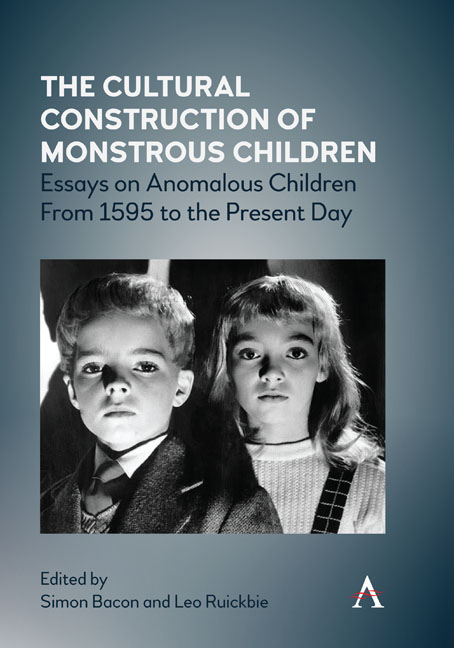 The Cultural Construction of Monstrous Children
The Cultural Construction of Monstrous Children Book contents
- Frontmatter
- Contents
- List of Illustrations
- Acknowledgements
- Introduction
- Part I Historical Case Studies
- Part II Factual Anxiety in Fictional Representations: The Undead Child
- Part III Factual Anxiety in Fictional Representations: The Monstrous Child
- Part IV Cultural Categorization in the Past, Present and Possible Future
- Notes on Contributors
- Index
Chapter Six - Undead Role Models: Why the Zombie Child Is Irresistible
Published online by Cambridge University Press: 20 January 2022
- Frontmatter
- Contents
- List of Illustrations
- Acknowledgements
- Introduction
- Part I Historical Case Studies
- Part II Factual Anxiety in Fictional Representations: The Undead Child
- Part III Factual Anxiety in Fictional Representations: The Monstrous Child
- Part IV Cultural Categorization in the Past, Present and Possible Future
- Notes on Contributors
- Index
Summary
Zombie Kids: From Hope to Dread
Children have often lurked in the background of modern zombie cinema, and just as the core threat in every zombie film is the potential turn from human to zombie, children have mirrored this change, transforming from beacons of hope to victims and finally to monsters. The zombie subgenre of horror has often made use of children to add a further sensationalistic shock to a film, a sense that the world really has been turned topsy-turvy when even children are exposed to the horrors of cannibalism, gruesome death and walking corpses. This is similar to how children function in other types of horror cinema: films such as The Exorcist, The Omen and Children of the Corn garner much of their power from the youth of their main characters, from the sight of an immense evil corrupting the goodness and innocence of the young. But unlike those other films, in which the evil in the child comes from the control of an outside force, and which involve the possession of children by some demonic element, the child zombie lacks a controlling outside agent to blame; they are rotten from the inside, as well as rotting before our eyes.
Just as the first cinematic zombie of the modern era might arguably be read as setting old age against youth, when, in George Romero's Night of the Living Dead, we watch an older ghoul attack the youthful Barbara and Johnny as they attempt a reluctant remembrance at their father's grave, the future of zombies is clearly in its younger members. In zombie literature and cinema, as in many other post-apocalyptic narratives, children have frequently been connected with the idea of hope for a better future. Yet some of the more disturbing images from zombie cinema and narrative engage with the undead pathos of the child as zombie. As fans of the genre know, at least since the landmark Night of the Living Dead, the zombie child has also been connected with darker fears: fear of the nuclear family of the 1950s gone wrong, and of the mindless animality of children and the younger generations. Yet, despite its dark origins, the child-as-zombie has proven to be an image both resilient and malleable to new and sunnier interpretations, as many recent films and texts have put a surprisingly positive spin upon the oncebleak subtext.
- Type
- Chapter
- Information
- The Cultural Construction of Monstrous ChildrenEssays on Anomalous Children from 1595 to the Present Day, pp. 109 - 120Publisher: Anthem PressPrint publication year: 2020


